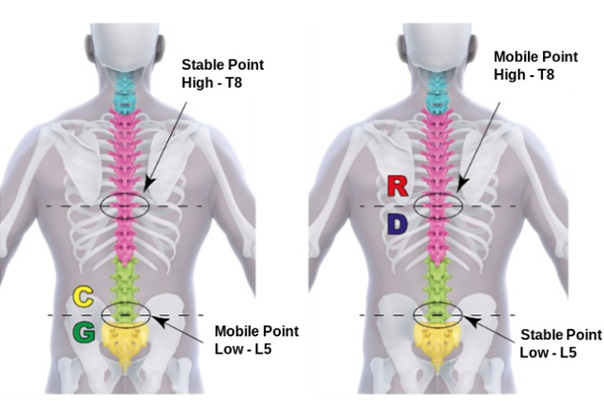 A resource dedicated to educating the masses on motor preferences in baseball, #BaseballActionID provides with coaches with an opportunity to learn the personal “fingerprints” of their players, which can help them promote development and reduce the risk of injury. These preferences help establish a “motor profile” for athletes, which can highlight their physical capacities, natural qualities, and overall uniqueness.
A resource dedicated to educating the masses on motor preferences in baseball, #BaseballActionID provides with coaches with an opportunity to learn the personal “fingerprints” of their players, which can help them promote development and reduce the risk of injury. These preferences help establish a “motor profile” for athletes, which can highlight their physical capacities, natural qualities, and overall uniqueness.
We have empirically identified two parameters that do not change over time. The first is determining whether the athlete has a Vertical or Horizontal “organization.” It’s the most important knowledge a coach should have, and is the most steadfast motor preference in the movement organization of an athlete. Teaching horizontal properties to a vertically organized athlete is likely to detract from performance and increase odds for an injury. Simply put, not everyone pulls or pushes the same—many athletes just move differently!
The second parameter refers to high or low “mobile point,” where we group athletes into dissociated or associated groups based on how they rotate. The idea behind this parameter is the athlete must be in a free, relaxed and coordinated position in order to allow for the rotational gestures that coaches are trying to get them to make. Being able to define where the athlete’s mobile point is allows us to define their “stable point,” which refers to the area that is not moving during rotation:
Based on this information, we can promote a “coordination zone” for athletes around the spine, which also ties in the shoulders and pelvis in the kinetic chain, ultimately allowing for a “relay”of sorts, between the lower body and the upper body and vice versa. The cooperation between the stable point and the mobile point is very important but often misunderstood.
Once we determine vertical/horizontal organization along with the mobile point of an athlete, we can then determine the most optimal place a pitcher should be releasing the ball, for example. As injuries remain a major issue among pitchers at the game’s highest level, the time is now to learn about the most healthy, efficient, energy-saving arm action/release point.
In our opinion, this release point is absolute, and should not be changed or altered, which can result in catastrophic arm injury.
These individual preferences have been woven into your athletes’ preferred motor skills from birth. They tell us what the most optimal and healthiest release point is. People involved with developing pitchers—parents, coaches, instructors, trainers, PTs and even doctors—commonly try to improve an athlete’s performance by modifying their mechanics or movement patterns. Sometimes, they may believe these changes are necessary to correct or “fix” the athlete’s technique or get better results, but nevertheless, this trend is prevalent across all levels of baseball.
Despite their good intentions, these individuals may not realize that changing movement patterns without knowing and understanding an athlete’s unique natural motor profile can put them at risk of serious injuries. So instead of making athletes move in a specific way just because a book says so, “that’s how I did it,” or to improve your spin rates, we should really be taking more time to understand how athletes’ bodies naturally like to move.
You can find more information at www.baseballactionid.com or by emailing [email protected].